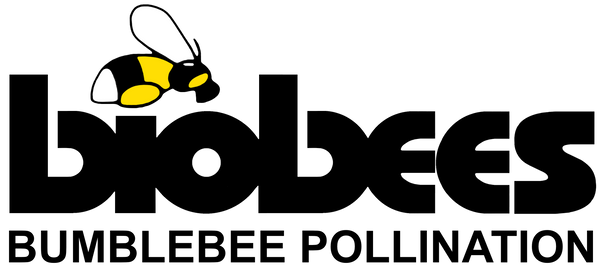Courgettes (Cucurbita pepo) have separate male and female flowers occurring on the same plant (i.e. monoecious), with only the female flowers developing into fruit. Male flowers can outnumber female flowers by up to 10:1, and occur at the end of a slender stem, producing three anthers. Pollen gains are large and well suited to bumblebee transport. Female flowers occur at the end of a short peduncle, with a thick style and two-lobed stigma. The swollen ovary occurs below the corolla. Flowers open early in the morning and close around midday, never to reopen. The courgette fruit is harvested while still, botanically speaking, immature.
As courgettes have separate male and female flowers, they require a pollinator, such as a bumblebee, to transfer pollen from male to female flowers. The bumblebees must forage for both nectar and pollen, so it is important that the sugar solution is reduced within the hive to encourage the bumblebees to visit female flowers. Wind is not sufficient to pollinate courgettes.
As courgettes have separate male and female flowers, they require a pollinator, such as a bumblebee, to transfer pollen from male to female flowers. The bumblebees must forage for both nectar and pollen, so it is important that the sugar solution is reduced within the hive to encourage the bumblebees to visit female flowers. Wind is not sufficient to pollinate courgettes.
Potential Pollination Issues
Flowers close earlier on hot days, so it is important that bees are active early in the morning, which is generally the case with bumblebees.
As with all flowering plants, the health and nutrition of the plant can affect pollen production and viability. Poor quality/quantities of pollen will have negative impacts on the bumblebee hive, and may lead to bumblebees searching for alternative pollen sources away from the crop, or to a reduction in the life of the hive. It is important to ensure that the plants are vigorous and healthy during flowering, and that their nutritional requirements are adequately met.
Call us at the number below, or e-mail to enquire now!
